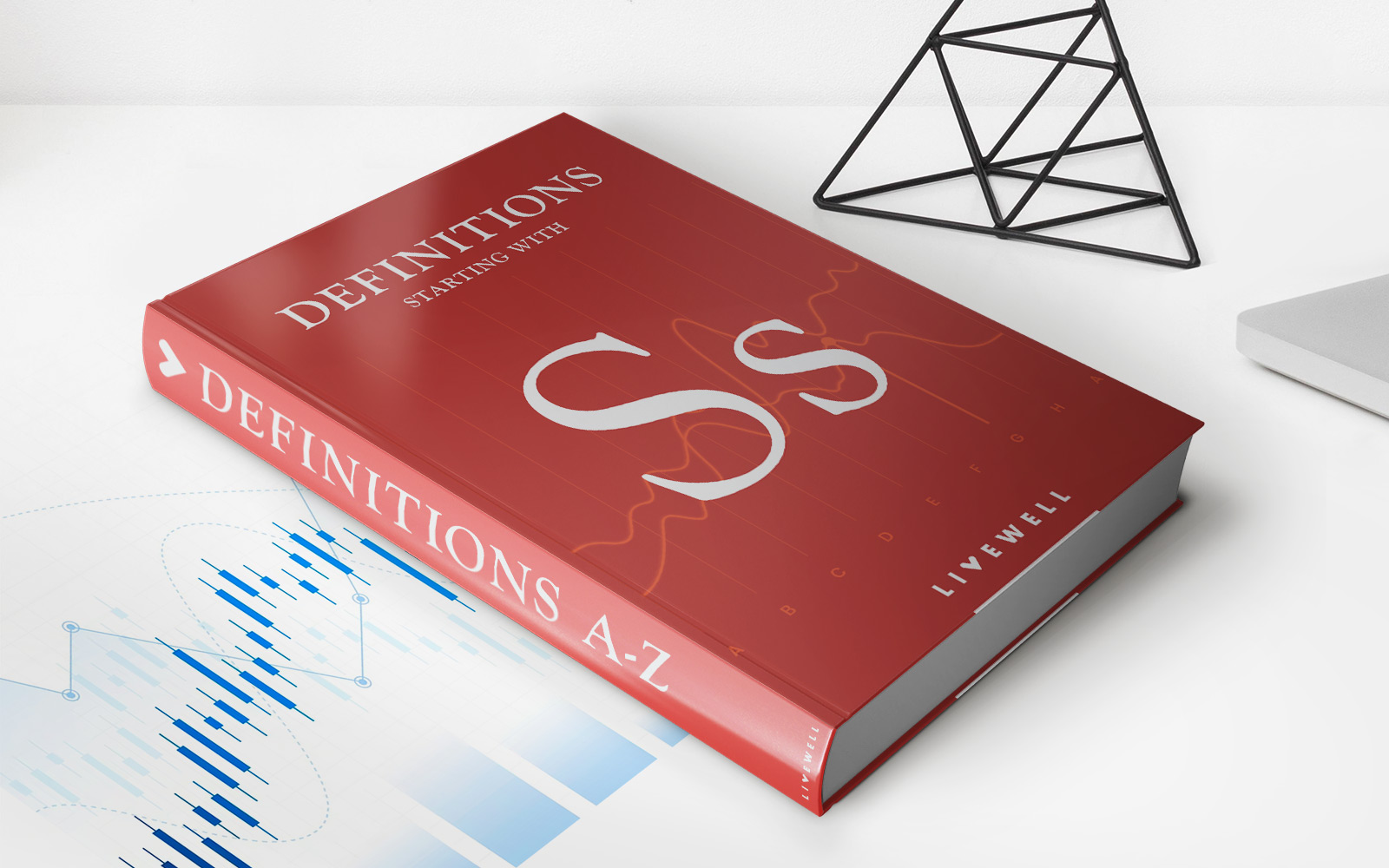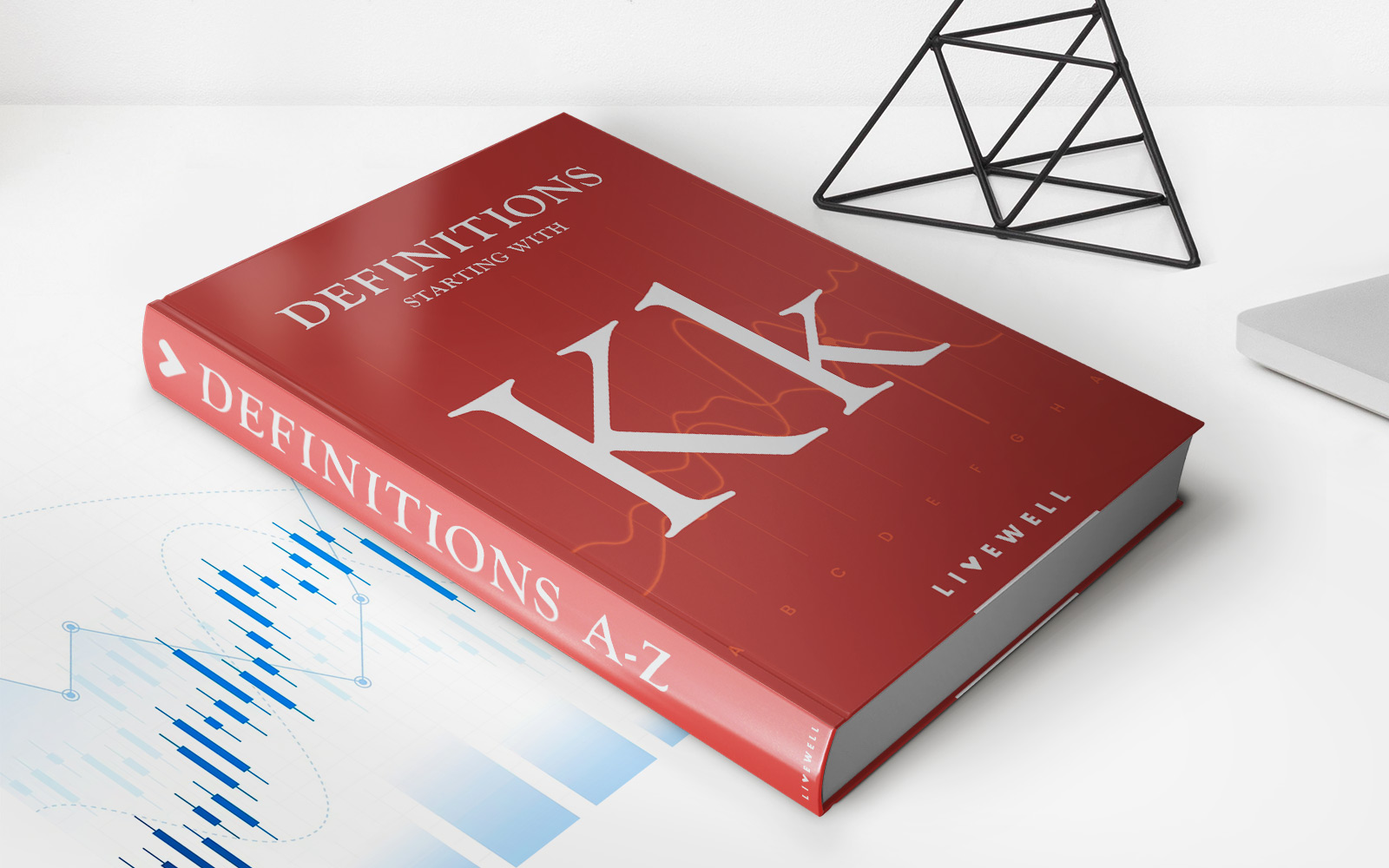Home>Finance>How To Determine If The Firm Is Risky By Its Capital Structure


Finance
How To Determine If The Firm Is Risky By Its Capital Structure
Modified: December 30, 2023
Learn how to assess the riskiness of a firm based on its capital structure and financial metrics. Gain insights into finance and make informed investment decisions.
(Many of the links in this article redirect to a specific reviewed product. Your purchase of these products through affiliate links helps to generate commission for LiveWell, at no extra cost. Learn more)
Table of Contents
Introduction
When it comes to evaluating the riskiness of a firm, one of the key factors to consider is its capital structure. A firm’s capital structure refers to the way it finances its operations, including the mix of debt and equity used to fund its activities. Understanding the capital structure of a firm is crucial for investors and stakeholders as it provides insights into the financial health and risk profile of the company.
Capital structure plays a vital role in determining the stability and long-term sustainability of a firm. A well-balanced capital structure can help a company weather economic downturns and make strategic investments for growth. On the other hand, an improper capital structure can expose the firm to unnecessary risk and hinder its ability to raise funds.
Evaluating the riskiness of a firm’s capital structure is essential for several reasons. Firstly, it allows investors to assess the financial stability and the probability of default of the firm. Secondly, it provides insights into the firm’s ability to generate consistent cash flows to meet its debt obligations. Lastly, it helps in understanding the level of financial leverage, which indicates the degree of risk associated with the firm’s operations.
Several factors affect firm riskiness, including the proportion of debt and equity in the capital structure, the interest coverage ratio, and the overall financial leverage. Analyzing these factors can provide a comprehensive view of the firm’s ability to handle financial obligations and withstand market volatility.
In this article, we will explore the various aspects of analyzing a firm’s capital structure to determine its riskiness. We will delve into key financial ratios and metrics that can help in assessing firm risk and make informed investment decisions. By understanding the intricacies of capital structure analysis, investors can better evaluate the risk-return tradeoff associated with different investment opportunities.
Definition of Capital Structure
Capital structure refers to the way a company finances its operations and investments by utilizing a combination of debt and equity. It represents the mix of long-term debt, short-term debt, common equity, preferred equity, and retained earnings used to fund the firm’s assets and operations. Understanding the capital structure is crucial as it determines the risk profile and financial stability of a company.
In simple terms, capital structure is the composition of a firm’s liabilities and equity. Liabilities consist of debt obligations, including bonds, loans, and other credit facilities, while equity represents the shareholders’ ownership in the company. By combining these two components, the capital structure shows how the firm is funded and the proportion of debt and equity used in its financing.
The capital structure decision is influenced by various factors, including the financial objectives of the firm, cost of capital, tax considerations, risk tolerance, industry norms, and the company’s stage of growth. A firm may choose to utilize more debt financing if it believes it can generate higher returns from its investments than the cost of borrowing. Conversely, a company may opt for more equity financing to avoid excessive debt burden and maintain financial flexibility.
Commonly used terms to describe the composition of capital structure include debt-to-equity ratio, leverage ratio, debt ratio, and equity ratio. These ratios provide insights into the relative proportion of debt and equity in the firm’s capital structure and help in determining the risk profile of the company.
It is important to note that the optimal capital structure varies across industries and depends on factors such as the level of business risk, interest rates, market conditions, and the company’s growth prospects. A capital structure that may be considered appropriate for one firm may not be suitable for another. Therefore, a thorough analysis of the firm’s specific circumstances is necessary when assessing its capital structure.
In the next sections, we will explore the importance of evaluating firm riskiness, the factors influencing firm risk, and the key financial ratios used in analyzing the capital structure of a company.
Importance of Evaluating Firm Riskiness
Evaluating the riskiness of a firm is a crucial step in making investment decisions and assessing the financial health of the company. Understanding the level of risk associated with a firm’s operations and capital structure is essential for several reasons.
One of the primary reasons for evaluating firm riskiness is to assess the probability of default. This is particularly important for investors and creditors who want to ensure that the company they are investing in or lending to has a low risk of defaulting on its financial obligations. By evaluating firm riskiness, investors can make informed decisions about whether to invest in the company’s equity or debt securities.
Furthermore, evaluating firm riskiness helps in understanding the firm’s ability to generate consistent cash flows. A highly risky firm may struggle to generate sufficient revenue to meet its debt obligations, which can increase the likelihood of default. On the other hand, a low-risk firm with stable and predictable cash flows is more likely to meet its debt obligations and provide a steady return on investment.
Assessing firm riskiness also allows for a better understanding of the level of financial leverage. Financial leverage refers to the use of debt financing to amplify returns for shareholders. While financial leverage can enhance returns in favorable market conditions, it also increases the risk of financial distress and bankruptcy in adverse circumstances. Evaluating firm riskiness helps in determining the optimal level of financial leverage and identifying the potential risks associated with excessive debt.
Moreover, evaluating firm riskiness provides insights into the overall financial stability and health of the company. A highly risky firm may face challenges in accessing new financing or obtaining favorable borrowing terms, which can impact its ability to fund growth initiatives or invest in new projects. By understanding the risk profile of a firm, investors, stakeholders, and even company management can take appropriate measures to mitigate risks and ensure long-term sustainability.
Lastly, assessing firm riskiness allows for a more comprehensive analysis of investment opportunities and portfolio diversification. By considering the risk profile of different companies, investors can build a well-diversified portfolio that balances risk and return. Evaluating firm riskiness helps in identifying companies with different risk characteristics and incorporating them into the investment strategy.
Overall, evaluating firm riskiness is vital for investors, creditors, and stakeholders to make informed decisions and mitigate potential risks. By understanding the risk profile of a firm, it becomes possible to assess its financial stability, cash flow generation capabilities, level of financial leverage, and overall suitability as an investment opportunity.
Factors Affecting Firm Riskiness
Several factors contribute to the overall riskiness of a firm. Understanding these factors is crucial for evaluating the financial health and stability of a company. Let’s explore some of the key factors that influence firm riskiness.
1. Industry and Market Conditions: The industry in which a firm operates plays a significant role in determining its risk profile. Some industries, such as technology or biotechnology, are inherently riskier due to rapid market changes and uncertainties. Economic conditions, market trends, and competition within the industry also impact the riskiness of a firm.
2. Business Model and Strategy: The nature of a firm’s business model and its strategic choices can influence its risk profile. Companies that rely heavily on a single product or a few major clients may face higher risks compared to those with diverse revenue streams. Similarly, firms pursuing aggressive growth strategies or entering new markets may expose themselves to higher levels of risk.
3. Debt-to-Equity Ratio: The proportion of debt to equity in a firm’s capital structure affects its riskiness. Higher levels of debt increase financial leverage and can amplify returns during favorable market conditions. However, excessive debt can lead to financial distress and a higher risk of default during economic downturns.
4. Interest Coverage Ratio: The interest coverage ratio, which measures a firm’s ability to cover its interest expenses with its operating income, is another factor influencing firm riskiness. A low interest coverage ratio indicates a higher risk of default on interest payments, while a high ratio suggests a lower risk.
5. Cash Flow Stability: The stability and predictability of a firm’s cash flows affect its riskiness. Companies with stable and consistent cash flow generation have a lower risk profile compared to those with volatile or unpredictable cash flows. A reliable cash flow stream allows firms to meet their debt obligations and withstand potential financial shocks.
6. Market and Credit Risks: Market risks, such as fluctuations in interest rates, foreign exchange rates, and commodity prices, can impact a firm’s riskiness. A firm’s exposure to credit risk, including the likelihood of customers defaulting on payments, also contributes to its overall risk profile.
7. Management and Corporate Governance: The quality of management and corporate governance practices can affect firm riskiness. Effective risk management strategies, competent leadership, and transparent decision-making processes can help mitigate risks and enhance the stability of a company.
It’s important to note that these factors interact with each other and vary across different industries and companies. A holistic analysis of these factors is crucial for understanding the overall riskiness of a firm’s operations and making informed investment decisions.
Analyzing the Capital Structure
Analyzing a firm’s capital structure is a critical step in assessing its riskiness and financial health. By examining various financial ratios and metrics, investors and stakeholders can gain insights into the composition of the firm’s capital structure and its implications on risk and profitability. Let’s explore some key ratios used in analyzing the capital structure of a company.
1. Debt-to-Equity Ratio: The debt-to-equity ratio measures the proportion of debt and equity in a firm’s capital structure. It is calculated by dividing total debt by total equity. A higher ratio indicates a higher level of debt relative to equity, suggesting higher financial leverage and potentially higher risk. A lower ratio indicates a more conservative capital structure with less reliance on debt.
2. Interest Coverage Ratio: The interest coverage ratio assesses a firm’s ability to cover its interest expenses with its operating income. It is calculated by dividing earnings before interest and taxes (EBIT) by the interest expense. A higher ratio indicates a greater ability to meet interest obligations and suggests a lower risk of default on interest payments. Conversely, a lower ratio suggests a higher risk of financial distress.
3. Debt Ratio: The debt ratio measures the proportion of a firm’s assets financed by debt. It is calculated by dividing total debt by total assets. A higher debt ratio signifies a greater reliance on debt financing and indicates higher financial risk. Conversely, a lower debt ratio suggests a more conservative capital structure with a smaller debt burden.
4. Equity Ratio: The equity ratio measures the proportion of a firm’s assets financed by equity. It is calculated by dividing total equity by total assets. A higher equity ratio indicates a larger portion of the capital structure funded by equity, suggesting a lower risk profile. A lower equity ratio indicates a higher level of debt relative to equity and implies higher financial risk.
5. Financial Leverage: Financial leverage refers to the use of debt to amplify returns for shareholders. It is calculated by dividing total assets by total equity. A higher financial leverage ratio indicates a higher degree of risk associated with the firm’s operations. It implies that the company has a higher proportion of debt compared to its equity and is more susceptible to financial distress.
When analyzing the capital structure, it’s important to compare these ratios to industry benchmarks and historical trends to gain a better understanding of the firm’s riskiness. Additionally, it is essential to consider the firm’s specific circumstances, such as its industry, business model, and growth prospects. A thorough analysis of the capital structure provides valuable insights into the financial stability, risk profile, and long-term sustainability of a company.
By leveraging these capital structure metrics, investors can make informed decisions about the risk-return tradeoff associated with investing in a particular company. It helps them assess the level of risk they are willing to tolerate and evaluate how a firm’s capital structure aligns with their investment objectives.
Debt-to-Equity Ratio
The debt-to-equity ratio is a key financial ratio used to assess the capital structure of a company. It measures the proportion of debt and equity financing in a firm’s capital structure, providing insights into its financial leverage and risk profile.
The debt-to-equity ratio is calculated by dividing total debt by total equity. Total debt includes both short-term and long-term debt obligations, such as loans, bonds, and other credit facilities. Total equity represents the shareholders’ ownership in the company, including common equity, preferred equity, and retained earnings.
A higher debt-to-equity ratio indicates a higher level of debt relative to equity financing, suggesting greater financial leverage. This means the company relies more on borrowed funds to finance its operations, investments, and growth initiatives. On the flip side, a lower debt-to-equity ratio signifies a more conservative capital structure with less reliance on debt financing.
Interpreting the debt-to-equity ratio involves considering the industry norms, the company’s growth stage, and the level of business risk associated with its operations. Different industries may have varying debt-to-equity ratio benchmarks, reflecting the risk characteristics and capital requirements of each sector.
A high debt-to-equity ratio may imply a higher level of financial risk and potential difficulties in meeting debt obligations. It indicates that the firm has a greater burden of debt, which can lead to increased interest expenses and limit financial flexibility. In times of economic downturns or a decline in the firm’s profitability, a high debt-to-equity ratio may heighten the risk of default and financial distress.
Conversely, a low debt-to-equity ratio suggests a lower level of financial risk. Companies with a conservative capital structure and a lower reliance on debt financing are typically better positioned to weather economic uncertainties. They have more flexibility in managing their debt obligations and are less susceptible to interest rate fluctuations or credit rating downgrades.
It’s important to note that the optimal debt-to-equity ratio varies depending on numerous factors, including the industry, company size, growth objectives, and the prevailing economic conditions. Industries with stable cash flows and consistent revenue streams, such as utilities or consumer staples, tend to have higher debt-to-equity ratios compared to industries with higher business risk.
When analyzing a company’s debt-to-equity ratio, it is valuable to compare it with industry peers and historical trends. Significant deviations from industry norms or significant changes over time may indicate shifts in the firm’s risk profile or financial strategy.
Ultimately, the debt-to-equity ratio is a critical metric for assessing a company’s risk profile and financial stability. It helps investors, creditors, and stakeholders understand the extent to which a company relies on debt financing and its potential exposure to financial risk. By considering the debt-to-equity ratio alongside other financial indicators and industry benchmarks, stakeholders can make informed decisions about investing, lending, or partnering with a particular company.
Interest Coverage Ratio
The interest coverage ratio is a financial metric used to evaluate a company’s ability to cover its interest expenses with its operating income. It provides insights into a firm’s capacity to meet its interest obligations and serves as an indicator of its financial health and riskiness.
The interest coverage ratio is calculated by dividing earnings before interest and taxes (EBIT) by the interest expense. EBIT represents the company’s operating income before deducting interest and taxes, while interest expense refers to the interest payments made on the firm’s debt obligations.
A higher interest coverage ratio indicates that a company generates sufficient operating income to cover its interest expenses. This suggests a lower risk of default on interest payments and reflects a stronger financial position. On the other hand, a lower interest coverage ratio implies a higher risk of financial distress and an increased likelihood of defaulting on interest obligations.
An interest coverage ratio below 1 indicates that the company’s operating income is not enough to cover its interest expenses, which raises concerns about the firm’s ability to meet its debt obligations. This situation, known as a “times interest earned” ratio below 1, may act as a warning sign to investors and creditors, indicating a higher risk of default.
When evaluating the interest coverage ratio, it is essential to consider industry benchmarks and the company’s specific circumstances. Different industries may have varying norms for interest coverage ratios, reflecting the risk profiles and operating dynamics of each sector. For example, capital-intensive industries with significant debt burdens, such as utilities or telecommunications, may have higher acceptable interest coverage ratios compared to less leveraged sectors.
Investors and creditors review the interest coverage ratio to assess a company’s financial stability and its ability to generate consistent cash flows. A high interest coverage ratio indicates that the company has a favorable debt-servicing capacity, which may attract investors seeking lower-risk investment opportunities. Conversely, a low interest coverage ratio can signal potential financial vulnerabilities and may lead to difficulties in accessing credit or negotiating favorable borrowing terms.
It’s important to note that the interest coverage ratio is just one piece of the puzzle and should be analyzed in conjunction with other financial metrics. For a comprehensive assessment of a company’s financial health, investors and stakeholders should consider factors such as the firm’s capital structure, cash flow stability, debt maturity profile, and market conditions.
A declining interest coverage ratio over time may indicate increasing financial risk, while an increasing interest coverage ratio suggests improved financial strength. It is also beneficial to compare the interest coverage ratio of a company with its industry peers and historical trends to gain a better understanding of its relative performance and risk profile.
In summary, the interest coverage ratio is a valuable tool for evaluating a company’s ability to meet its interest obligations. By assessing this ratio alongside other financial indicators, investors and creditors can make more informed decisions regarding their investment or lending strategies with respect to a particular company.
Debt Ratio
The debt ratio is a financial ratio that provides insights into the proportion of a company’s assets financed by debt. It is a crucial metric for evaluating a company’s capital structure and risk profile.
The debt ratio is calculated by dividing total debt by total assets. Total debt includes both short-term and long-term debt obligations, such as loans, bonds, and other credit facilities. Total assets represent the sum of a company’s liabilities and shareholders’ equity, encompassing all the resources owned by the company.
The debt ratio measures the extent to which a company relies on debt financing to support its operations and investments. A higher debt ratio indicates a greater proportion of debt in the capital structure, suggesting higher financial leverage and increased risk. Conversely, a lower debt ratio suggests a more conservative capital structure with a smaller reliance on debt financing.
The interpretation of the debt ratio depends on various factors, including industry norms, the company’s growth stage, and the level of business risk associated with its operations. Different industries may have different benchmarks for the debt ratio, reflecting the capital requirements and inherent risk profiles of each sector.
A high debt ratio implies a higher level of financial risk. Companies with a substantial amount of debt relative to their assets may face challenges in meeting their debt obligations, especially during economic downturns or periods of low profitability. A high debt ratio increases the interest expense and can limit the company’s financial flexibility and ability to reinvest in growth initiatives.
On the other hand, a low debt ratio suggests a lower level of financial risk. Companies with a conservative capital structure and a lower reliance on debt financing are typically better positioned to weather economic uncertainties. They have more flexibility in managing their debt obligations and are less susceptible to interest rate fluctuations or credit rating downgrades.
It’s important to note that there is no universally optimal debt ratio, as it depends on factors such as the company’s industry, growth objectives, and risk appetite. Industries with stable cash flows and consistent revenue streams, such as utilities or consumer staples, may have higher acceptable debt ratios compared to industries with higher business risk.
When analyzing a company’s debt ratio, it is valuable to compare it with industry peers and historical trends. Significant deviations or drastic changes in the debt ratio may indicate shifts in the firm’s risk profile or financial strategy.
While the debt ratio provides insights into the company’s financial structure and risk exposure, it is important to consider other financial metrics and qualitative factors in conjunction with the debt ratio for a comprehensive assessment of a company’s financial health.
Overall, the debt ratio is a critical metric that helps investors, creditors, and stakeholders evaluate the risk associated with a company’s capital structure. It assists in understanding the extent of the company’s debt financing and its potential implications for financial stability and long-term sustainability.
Equity Ratio
The equity ratio is a financial ratio that provides insights into the proportion of a company’s assets financed by equity. It is a key metric used to evaluate a company’s capital structure and risk profile.
The equity ratio is calculated by dividing total equity by total assets. Total equity represents the shareholders’ ownership in the company, including common equity, preferred equity, and retained earnings. Total assets include all the resources owned by the company, encompassing both tangible and intangible assets.
The equity ratio measures the extent to which a company relies on equity financing to support its operations and investments. A higher equity ratio indicates a larger proportion of equity in the capital structure, suggesting a lower level of financial risk. On the other hand, a lower equity ratio implies a higher reliance on debt financing and potentially higher financial risk.
A high equity ratio signifies a conservative capital structure with a larger equity base. This indicates that the company has a lower level of debt relative to its assets, providing a cushion against financial distress and increasing the company’s financial stability. A high equity ratio is often associated with companies that prioritize financial prudence and have a lower reliance on external financing.
Conversely, a low equity ratio suggests a higher level of financial risk. Companies with a lower proportion of equity in their capital structure may face challenges in meeting their financial obligations, especially during economic downturns or periods of low profitability. A low equity ratio implies a higher reliance on debt financing, which can increase interest expenses and limit the company’s financial flexibility and ability to withstand adverse market conditions.
It’s important to consider industry benchmarks and the company’s specific circumstances when interpreting the equity ratio. Different industries may have different norms for the equity ratio, reflecting the capital requirements and inherent risk profiles of each sector. Capital-intensive industries, for example, may have lower equity ratios compared to sectors with lower capital requirements.
When analyzing a company’s equity ratio, it is valuable to compare it with industry peers and historical trends. Significant deviations or drastic changes in the equity ratio may indicate shifts in the firm’s risk profile or capital structure decisions.
While the equity ratio provides insights into the company’s financial structure and risk exposure, it is important to consider other financial metrics and qualitative factors in conjunction with the equity ratio for a comprehensive assessment of a company’s financial health.
Overall, the equity ratio is a critical metric for evaluating a company’s risk profile and financial stability. It helps investors, creditors, and stakeholders understand the proportion of equity financing in the company and its implications for long-term sustainability and risk management.
Financial Leverage
Financial leverage is a concept that measures the extent to which a company uses debt to finance its operations and investments. It refers to the use of borrowed funds to amplify returns for shareholders. Financial leverage can enhance returns in favorable market conditions but also increases the level of risk associated with a company’s operations.
Financial leverage is commonly measured using the financial leverage ratio, calculated by dividing total assets by total equity. It indicates the proportion of a company’s assets that is funded by debt relative to shareholders’ equity. A higher financial leverage ratio suggests a higher level of debt financing and implies a greater risk profile for the company.
When a company employs financial leverage, it typically benefits from lower borrowing costs compared to the return it seeks to earn on its investments. This results in increased earnings for shareholders. However, the use of debt also exposes the firm to greater financial risk, as it means the company has a higher debt burden and is more susceptible to economic downturns or industry-specific challenges.
The primary advantage of financial leverage is the potential for higher returns for shareholders. Through the use of debt, the company can magnify its profits by investing in assets or projects with returns that exceed the cost of borrowing. This can lead to increased shareholder wealth and improved financial performance.
However, financial leverage also increases the risk of financial distress and bankruptcy. When a company faces challenging economic conditions or fails to generate sufficient cash flows to meet its debt obligations, high levels of debt can become a burden. It can limit the company’s ability to invest in growth initiatives, maintain financial flexibility, and endure economic downturns.
The optimal level of financial leverage varies among companies and industries. Factors such as industry norms, business risk, and the company’s growth prospects influence the ideal balance between debt and equity financing. Some industries, such as utilities or telecommunications, require substantial capital investments and may have higher acceptable levels of financial leverage compared to less capital-intensive sectors.
It is essential to assess the financial leverage of a company in conjunction with other key financial ratios and qualitative factors. This comprehensive analysis allows investors and stakeholders to evaluate the overall risk profile, capital structure decisions, and financial sustainability of the company.
Financial leverage is a tool that can benefit shareholders by amplifying returns, but it also heightens the level of risk associated with a company. Careful consideration of a firm’s financial leverage and its impact on solvency, profitability, and long-term sustainability is crucial for making informed investment decisions and understanding a firm’s risk-return tradeoff.
Determining the Riskiness of the Firm
Assessing the riskiness of a firm is a critical step in evaluating its financial health and making informed investment decisions. While there are various factors and ratios to consider, a holistic approach is needed to gain a comprehensive understanding of the firm’s risk profile. Let’s explore some key components in determining the riskiness of a firm.
1. Capital Structure Analysis: Analyzing the firm’s capital structure helps determine the level of debt and equity financing. Ratios such as the debt-to-equity ratio, interest coverage ratio, and financial leverage provide important insights into the company’s risk exposure related to its financing decisions.
2. Cash Flow Analysis: Examining the firm’s cash flow generation capabilities is crucial for assessing its riskiness. Stable and consistent cash flows indicate a lower risk of default on debt obligations. Conversely, erratic or negative cash flows raise concerns about the firm’s ability to meet its financial obligations and may indicate higher risk.
3. Profitability and Efficiency Ratios: Understanding the firm’s profitability and efficiency is essential in determining its riskiness. Ratios such as return on equity (ROE), return on assets (ROA), and efficiency ratios (e.g., asset turnover) provide insights into the firm’s ability to generate profits and utilize its assets effectively.
4. Industry Comparison: Comparing the firm’s financial metrics to industry peers helps assess its riskiness in the context of its specific sector. Industry benchmarks provide a frame of reference to gauge the firm’s performance, risk profile, and financial stability.
5. Market and Macroeconomic Factors: Evaluating the impact of market and macroeconomic conditions on the firm’s riskiness is crucial. Factors such as interest rates, inflation, currency fluctuations, regulatory changes, and industry trends can significantly influence a firm’s risk exposure and financial performance.
6. Credit Ratings and Market Perception: Considering the firm’s credit ratings assigned by reputable agencies can provide insights into its perceived creditworthiness. Market perception of the company’s riskiness, reflected in the pricing of its debt and equity securities, can also offer valuable information for risk assessment.
It is important to note that risk evaluation is not solely based on financial metrics. Qualitative factors such as the firm’s management team, corporate governance practices, competitive positioning, and strategic initiatives play a vital role in understanding the overall riskiness of the firm.
Furthermore, conducting scenario analysis and stress testing can help assess the firm’s resilience to potential adverse events. By considering various scenarios and their potential impact on the firm’s financials, investors and stakeholders can gain insights into the firm’s risk exposure and vulnerability.
It is crucial to remember that different investors may have different risk preferences. Some investors may be more risk-averse and prioritize stability and low debt levels, while others may be more risk-tolerant and seek higher returns from companies with higher risk profiles.
By incorporating quantitative and qualitative factors, industry analysis, market conditions, and risk analysis techniques, stakeholders can make a more informed evaluation of the firm’s riskiness. This comprehensive assessment guides investment decisions and helps align them with the investor’s risk appetite and objectives.
Case Studies
Examining real-world examples through case studies can provide concrete illustrations of the concepts discussed earlier. Let’s explore two case studies that demonstrate the assessment of firm riskiness based on the analysis of their capital structure and financial ratios.
Case Study 1: Company A
Company A operates in the technology industry, which is known for its rapid innovation and market volatility. By analyzing the company’s financial statements, we observe a debt-to-equity ratio of 0.8, indicating a higher level of debt compared to equity financing. The interest coverage ratio is 4, suggesting that the company generates four times the operating income needed to cover its interest expenses. These ratios indicate a moderate level of financial leverage and a relatively stable ability to meet interest obligations.
However, when evaluating the firm’s cash flow analysis, we notice fluctuating cash flows year over year due to the inherent cyclicality of the industry. This exposes the company to higher business risk, particularly during economic downturns. Additionally, the profitability ratios show that the firm’s ROE and ROA have been declining, signaling potential challenges in generating profits and utilizing assets efficiently.
Considering these factors, we determine that while Company A has a moderate level of financial risk, the industry dynamics and declining profitability raise concerns about its overall riskiness. Further analysis is needed to assess the company’s strategic initiatives, market positioning, and ability to adapt to technological advancements.
Case Study 2: Company B
Company B operates in the consumer goods industry and has a more conservative capital structure. The debt-to-equity ratio is 0.3, indicating a lower level of debt relative to equity financing. The interest coverage ratio is 8, showcasing a strong ability to cover interest expenses. These ratios suggest a lower level of financial leverage and a lower risk of default on interest payments.
In terms of cash flow analysis, Company B demonstrates consistent and strong cash flow generation, reflecting its stable and profitable operations. The profitability ratios indicate a healthy return on equity and return on assets, showcasing effective management of resources and profitability.
Considering these factors, we determine that Company B has a conservative capital structure and lower financial risk. The stable cash flows, strong profitability, and efficient asset utilization position the company as a lower-risk investment opportunity. However, further analysis should be conducted to consider other qualitative factors, such as competitive positioning and industry trends, to gain a comprehensive understanding of its risk profile.
These case studies illustrate how the analysis of a firm’s capital structure and financial ratios can contribute to assessing its riskiness. However, it is essential to note that each case is unique, and other factors, including industry dynamics and qualitative aspects, should be considered to make well-informed investment decisions.
Conclusion
Evaluating the riskiness of a firm’s capital structure is a crucial process for investors, creditors, and stakeholders. By examining various financial ratios, analyzing cash flow patterns, and considering qualitative factors, one can determine the level of risk associated with a company’s operations and financial health.
The capital structure analysis provides insights into the proportion of debt and equity in a firm’s financing mix. Ratios such as the debt-to-equity ratio, interest coverage ratio, and financial leverage ratio help assess the risk profile and financial stability of a company. Analyzing these ratios alongside industry benchmarks and market conditions allows for a comprehensive evaluation of the firm’s riskiness.
Moreover, cash flow analysis is essential in understanding the firm’s ability to generate consistent cash flows to meet its financial obligations. Analyzing profitability ratios and efficiency metrics can offer insights into the firm’s operational performance and risk exposure.
Qualitative factors, such as industry dynamics, management quality, and market perceptions, further contribute to the assessment of firm riskiness. Taking into account industry norms, macroeconomic factors, and potential scenarios allows for a more well-rounded understanding of the risks involved.
Case studies have demonstrated the practical application of these analytical tools and the importance of considering both quantitative and qualitative factors. By examining real-world examples, it becomes evident that the riskiness of a firm varies across industries and depends on unique circumstances.
In conclusion, evaluating the riskiness of a firm’s capital structure is a multi-dimensional process that requires a comprehensive analysis of financial ratios, cash flow patterns, qualitative factors, and industry benchmarks. By doing so, investors and stakeholders can make informed decisions, assess risk-return tradeoffs, and align their investments with their risk preferences and objectives.
Ultimately, understanding the riskiness of a firm contributes to the development of a solid investment strategy and helps navigate the dynamic landscape of financial markets.














